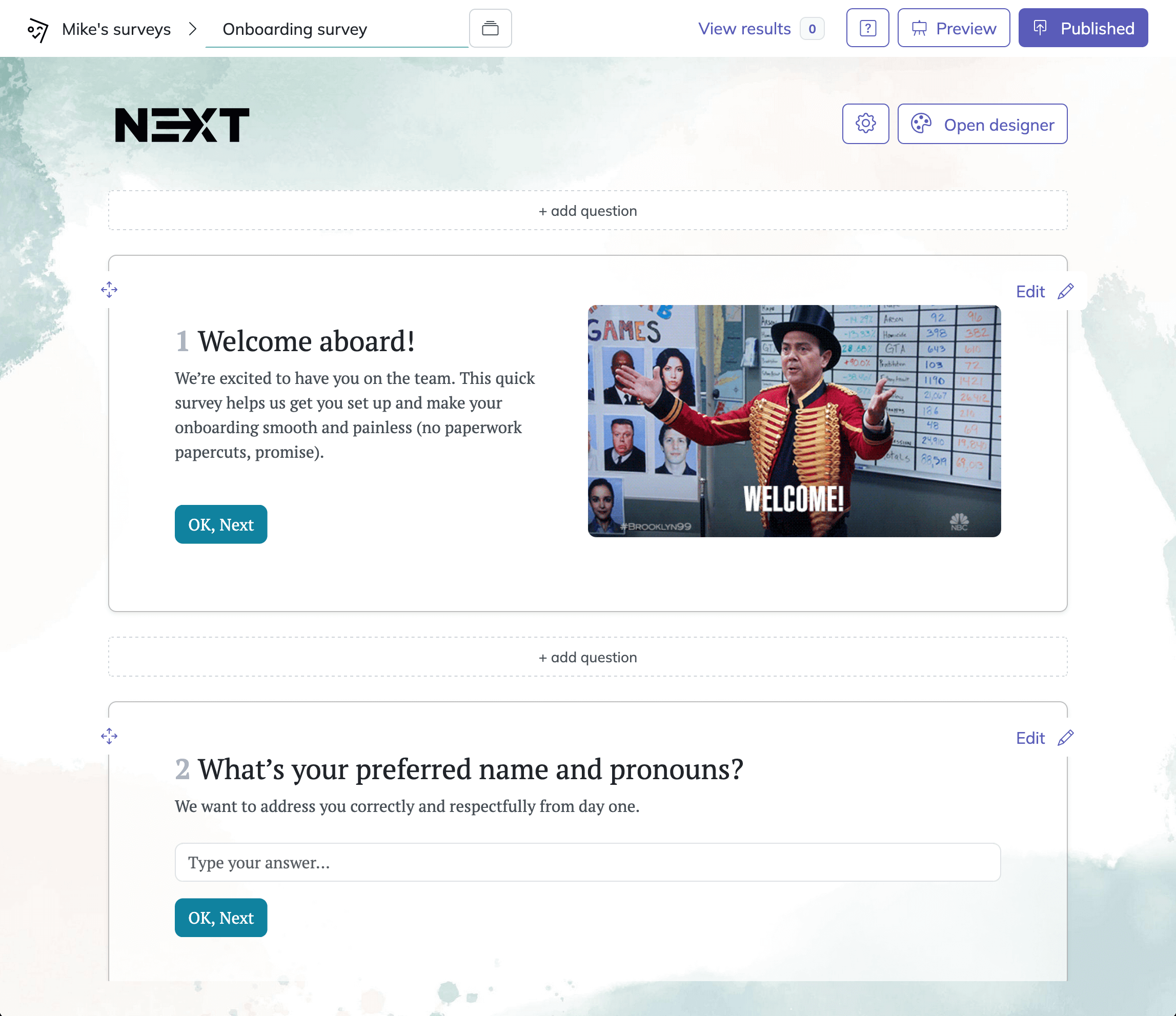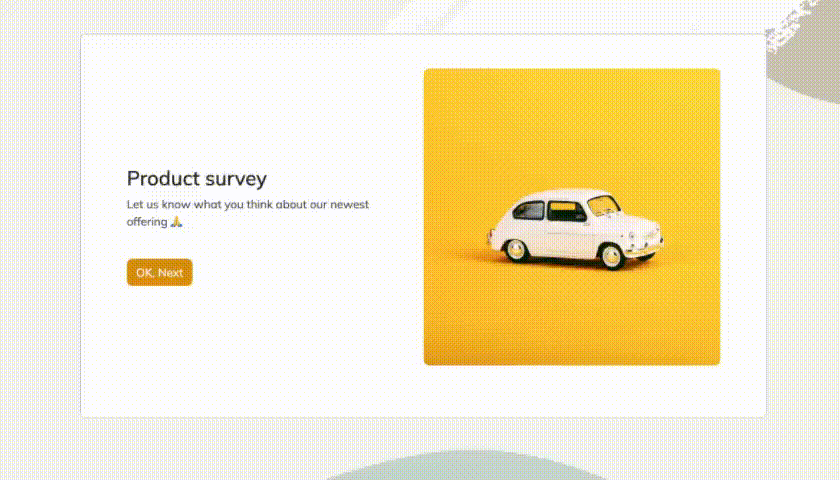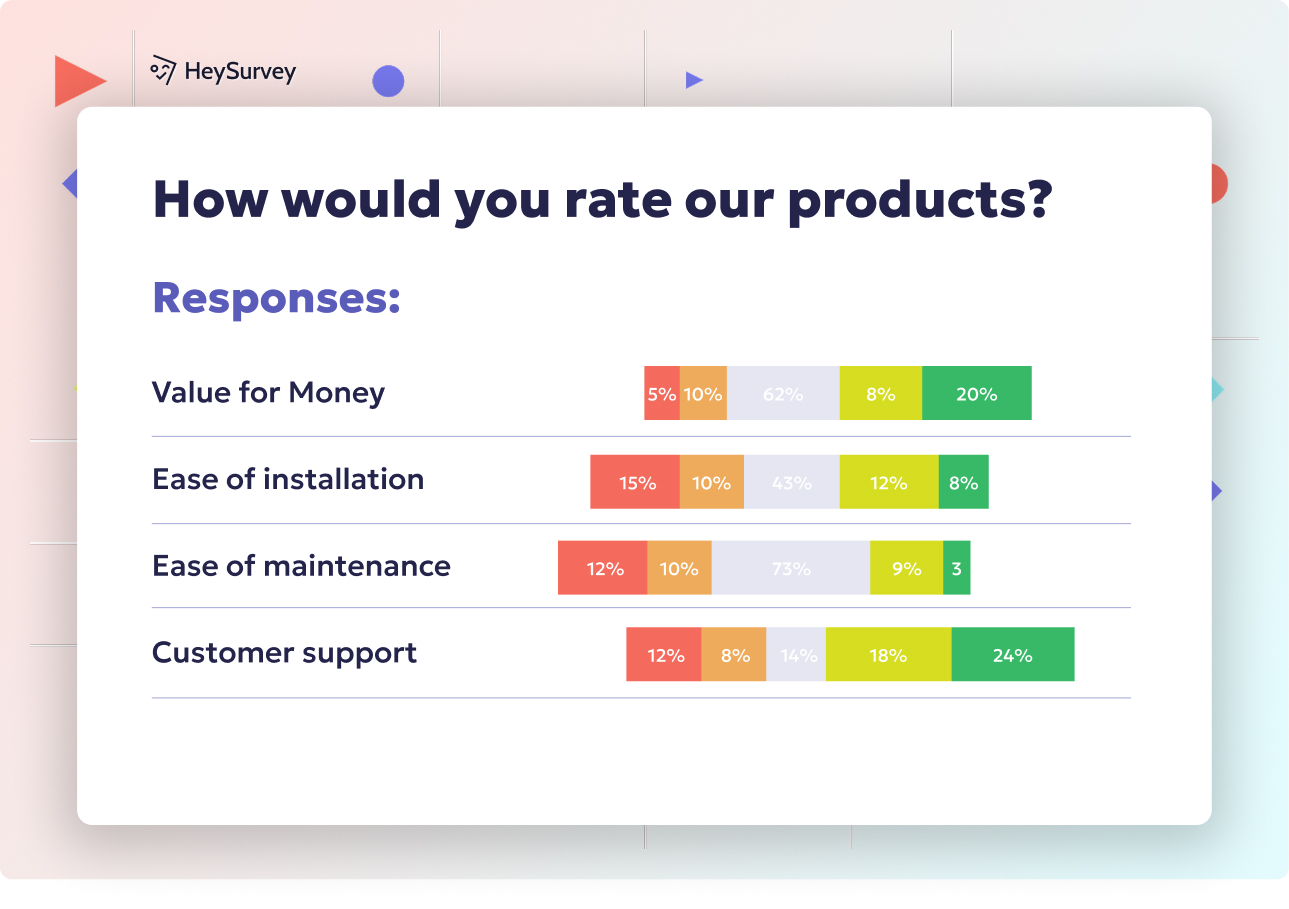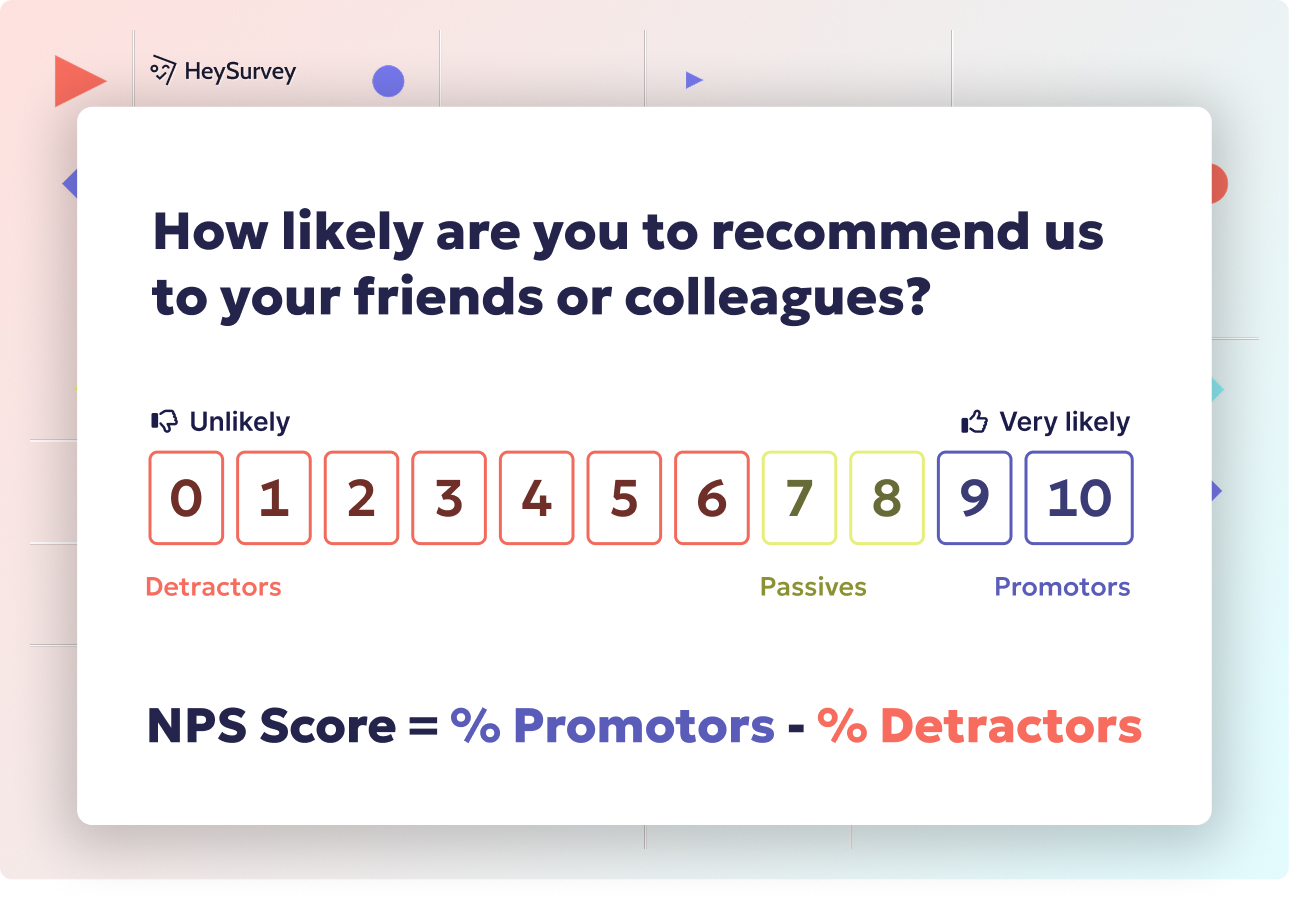29 Qualitative Survey Questions for Deep Customer Insights
Discover 25+ expert qualitative survey questions with examples to unlock deep customer insights and transform your user research approach.
Qualitative survey questions are your secret weapon for capturing the real “voice of the customer,” letting you see, hear, and feel their stories in rich, verbatim feedback. These open-ended prompts dig deeper than multiple-choice—helping you unlock motivations, detect sentiment, and discover needs you didn’t even know were out there. Start with qualitative questions when you need to explore, diagnose, or empathize: early product discovery, UX research, churn analysis, and troubleshooting mysterious pain points. In the sections below, you’ll find 8 essential qualitative question types, with clear guidance and plenty of practical examples for every scenario.
Open-Ended Questions
Why and When to Use Open-Ended Questions
Open-ended questions are the unsung heroes of free-response surveys. They allow participants to say what they want, not just check a box. Choose these whenever you want rich verbatim feedback—not just numbers, but actual words you can quote, analyze, and cherish.
Open-text questions shine at the fuzzy front end of product discovery. They help you spot what competitors miss and gather testimonials in customers’ own words. Use them to minimize response bias and make customers feel truly heard.
These questions are especially valuable when:
- You’re uncovering unknown issues
- Early-stage concept testing
- Wanting to capture stories and edge cases
- Gathering candid feedback after a product launch
- Reducing the limits set by predefined choices
Sample Open-Ended Questions
What motivated you to try our product for the first time?
Describe the biggest challenge you face when using similar tools.
In your own words, how would you improve this feature?
Tell us about a time our service exceeded your expectations.
What three words best capture your overall experience?
With open-ended text boxes, there’s no limit beyond imagination—just genuine, uncensored insight at your fingertips.
Open-ended survey questions elicit detailed and nuanced responses, providing deeper insights into participants' thoughts, feelings, and experiences. (entropik.io)

Creating a qualitative survey with HeySurvey is easy, even if you’re totally new to the platform. Just follow these three simple steps to get your insights flowing fast!
Step 1: Create a New Survey
Head over to HeySurvey and click Create Survey to start fresh. You can either:
- Choose a pre-built template designed for qualitative surveys (highly recommended to save time), or
- Start from an empty sheet if you want full control.
Once you pick, name your survey with something clear and catchy. HeySurvey will open the Survey Editor, your command center for building and customizing your questionnaire.
Step 2: Add Your Questions
Click Add Question to start filling your survey with the types of qualitative questions you want—like open-ended text boxes for free-response feedback, or branching choice questions for follow-ups. You can:
- Select Text type questions for rich, verbatim input
- Customize each question with descriptions, placeholders, and required status
- Insert images or use built-in libraries like Unsplash or Giphy to make questions more engaging
- Duplicate questions for quicker setup
Don’t forget to build in branching if you want different paths based on answers. This makes follow-up or clarifying questions seamless and relevant.
Step 3: Publish Your Survey
Once your questions are ready, click Preview to see how it looks on desktop and mobile. Tweak design or phrasing as needed in the Designer Sidebar to keep things clean and fun.
Ready? Hit Publish to generate your shareable link. Remember, you’ll need an account to publish and access responses. Once live, distribute your survey via email, social media, or embedded on your website.
Bonus Step 1: Apply Your Branding
Go to the Branding panel to upload your logo and customize colors, fonts, and backgrounds. Keep your survey recognizable & professional. HeySurvey’s designer tools let you match your brand’s personality with ease.
Bonus Step 2: Define Settings
In the Settings tab, you can:
- Set start/end dates for when your survey is live
- Limit how many responses you accept
- Add a redirect URL so respondents land somewhere special after completing the survey
- Enable options like letting participants view summarized results
Bonus Step 3: Skip and Branch Into Relevant Paths
For a dynamic experience, use HeySurvey’s branching capability to skip irrelevant questions or send people down specific paths based on earlier answers. This keeps your survey focused and respectful of respondents’ time.
Hit the button below to open a qualitative survey template and start crafting your survey in minutes!
Probing Follow-Up Questions
Why and When to Use Probing Follow-Up Questions
Probing follow-up prompts are like having a second cup of coffee with your customer, inviting them to open up further. After the first round of answers, use clarifying probes to get specific, deeper, or more personal details that the initial question may have missed.
They are invaluable during interviews, iterative surveys, and whenever an answer leaves you scratching your head asking, “But what does that really mean?” These questions help customers clarify ambiguity, explain motivations, and surface pain points that might otherwise stay hidden.
Probing is especially productive when:
- You need to clarify vague or general responses
- Uncovering emotional drivers behind behaviors
- Digging into a specific pain point or delight
- Exploring root causes of feedback
- Looking to add context or color to research findings
Sample Probing Follow-Up Questions
Can you elaborate on what you mean by “confusing”?
What specific step caused frustration?
Why was that feature important to you?
How did that make you feel?
What would have changed the outcome for you?
By threading in these follow-up prompts, you don’t just gather data—you reveal layers of meaning far richer than a simple yes or no.
Implementing strategic probing questions in qualitative surveys can increase response length by 75% and uncover 50% more thematic areas, enhancing data richness. (cmbinfo.com)
Clarification & Confirmatory Questions
Why and When to Use Clarification & Confirmatory Questions
Clarification and confirmatory questions shine when you want to ensure you fully understand what a respondent intends. Confirmation questions act as a verbal safety net, reducing the risk of you misinterpreting valuable insights before taking action.
Use these clarity checks anytime the language is broad, or when you’re ready to make a decision—like tweaking a product, or following up on Net Promoter Score feedback. They help you move from guesswork to certainty, especially when multiple interpretations could change what you do next.
You'll find clarity checks are best for:
- Validating insights before acting
- Reducing costly misunderstandings
- Making sure terms and contexts are clear
- Segmenting feedback for deeper analysis
- Confirming the severity and scope of problems
Sample Clarification & Confirmatory Questions
When you said the interface is “busy,” were you referring to layout or colors?
Do you mean the checkout flow or the payment gateway?
So the delay happened after you clicked “Submit,” correct?
Could you rank the pain points you mentioned from most to least severe?
Is this the first time you’ve encountered this problem?
With every clarity check, you are building a bridge from ambiguity to actionable insight—one careful step at a time.
Narrative & Storytelling Questions
Why and When to Use Narrative & Storytelling Questions
When you invite customers to tell their stories, you uncover the treasures of their everyday experience. Experience narratives capture context beyond just numbers—they’re the secret sauce for journey mapping, persona building, and powerful case studies.
These narrative questions work best when you want to understand the flow of experiences, emotions, or events over time. You’re not just chasing an answer—you’re asking for the whole backstory, as if the customer were the hero in their own product adventure.
Narrative prompts are ideal for:
- Collecting detailed customer journey stories
- Building out user personas grounded in reality
- Finding raw material for compelling case studies
- Understanding emotions connected to service touchpoints
- Mapping user decisions from start to finish
Sample Narrative & Storytelling Questions
Walk us through the moment you realized you needed a new solution.
Tell the story of your last interaction with customer support.
Describe a day-in-the-life when using our app.
Recount a situation where our product surprised you.
Share a memorable experience—good or bad—with our competitor.
Gathering stories transforms feedback from abstract ideas to vivid, relatable journeys, helping your team truly walk in the customer’s shoes.
Verb-based prompts are most effective in eliciting diverse and meaningful narratives in qualitative gender assessments. (journals.sagepub.com)
Projective & Metaphor-Based Questions
Why and When to Use Projective & Metaphor-Based Questions
Sometimes, the best way to tap into a customer’s subconscious is through the playground of metaphor. Metaphor technique harnesses creativity and lateral thinking, asking respondents to project feelings onto animals, colors, cars, or celebrities.
These projective questions are powerful in branding and ad testing, where surface words might mask deeper truths. By giving respondents a playful scenario, you gather rich, emotional insights that direct questioning can miss.
Use these metaphor-based questions in scenarios like:
- Exploring brand perception at a gut level
- Testing reactions to new positioning or visuals
- Identifying emotional drivers behind loyalty
- Making sense of “intangibles” in the customer experience
- Sparking lively conversations in qualitative interviews
Sample Projective & Metaphor-Based Questions
If our brand were an animal, which would it be and why?
Imagine our service is a car model—what features stand out?
Which celebrity best represents our app’s personality?
Pick a color that captures how you feel after using the product.
If this feature had a soundtrack, what genre would it be?
These playful prompts unlock the power of projective survey questions, helping you decode emotions that don’t fit neatly in a standard feedback form.
Laddering (The ‘5 Whys’) Questions
Why and When to Use Laddering (The ‘5 Whys’) Questions
Laddering, also known as “the 5 Whys,” works like a relentless toddler—using root-cause analysis to dig deeper, layer by layer. Ask “why” again and again to reveal core values, true motivations, or even unstated pain points that feedback rarely surfaces on its own.
This technique is perfect when you sense there’s more beneath the surface—like a complaint that signals a bigger issue or a source of delight that could inform your product roadmap. Use it to get past symptoms and find the root of satisfaction or frustration.
Laddering fits seamlessly into:
- User interviews exploring product loyalty
- Deep-dive questioning during churn analysis
- Prioritizing new features or improvements
- Mapping the core reasons behind ratings or sign-ups
- Understanding why customers advocate—or leave
Sample Laddering (The ‘5 Whys’) Questions
Why is faster load time important to you?
Why does saving two clicks matter?
Why is that savings significant?
Why does that make you trust our brand more?
Why is trust crucial in selecting a vendor?
By stacking “why” after “why,” you create a deep-dive questioning cascade that unearths actionable insights buried far below the first response.
Diary & Longitudinal Questions
Why and When to Use Diary & Longitudinal Questions
If you want to track change over time—how opinions morph, needs shift, or frustrations fade—diary and longitudinal questions are your go-to. An experience diary captures the shape of sentiment day by day, pinpointing pivots that moment-in-time surveys just miss.
Ask users to journal their thoughts, upload voice notes, or take periodic surveys as they walk through onboarding, adapt to new features, or weather the ups and downs of churn and engagement. It’s like time-lapse photography for product feedback.
These longitudinal questions are winners when:
- You need to monitor behavior or perception change
- Capturing long onboarding or trial periods
- Understanding retention, habit-formation, or drop-off
- Tracking emotional resonance or moments of surprise
- Observing firsthand use cases in the wild
Sample Diary & Longitudinal Questions
Please log your emotions after each session for one week.
What hurdles did you face today using the feature?
Describe any unexpected benefits you noticed this afternoon.
How did your perception of the UI evolve over the past three days?
Note the context (location, device) each time you open the app.
By collecting these ongoing snapshots, longitudinal qualitative research reveals story arcs and inflection points in the customer journey.
Word & Image Association Questions
Why and When to Use Word & Image Association Questions
Word and image association tasks add a fun, rapid-fire dimension to understanding customer sentiment and perceptions. Semantic differential exercises ask participants to pick words, emotions, or visuals that best describe a product, giving you a heat map of brand feelings and instant emotional mapping.
Perfect for branding audits or ad testing, these prompts are quick to answer—ideal for mobile surveys and fast feedback loops. Instead of pondering long explanations, respondents select or rank the words, images, or emotions that hit closest to home.
These questions are especially useful for:
- Rapid mapping of emotional responses
- Evaluating new logos, homepages, or features
- Testing advertising concepts or product packaging
- Segmenting audiences by uncontrolled initial impressions
- Boosting engagement with interactive survey elements
Sample Word & Image Association Questions
Pick three adjectives that best describe our new homepage.
Which of these images matches how you feel after checkout?
Select the emotion that surfaces when you see our logo.
Choose a photo that represents our customer service.
Which word would you remove from the list to improve accuracy?
By blending image association tasks with targeted adjectives, you convert fleeting impressions into insights you can visualize and act on.
Best Practices (Dos & Don’ts) for Crafting Qualitative Survey Questions
The Dos of Effective Qualitative Question Design
Crafting quality qualitative survey questions is an art, but there are a few golden rules for success. Start by keeping prompts neutral to avoid steering answers. Always set the context, so respondents know what to focus on.
Pilot test your questions with a small group first. Use branching logic to keep questions relevant and avoid overwhelming anyone. Summarize insights using verbatim quotes—don’t paraphrase away the customer’s magic!
- Optimize mobile text boxes so everyone, everywhere, finds it easy to respond
- Limit cognitive load with one clear, concise question at a time
- Incorporate tag cloud analysis to spot recurring themes fast
- Ensure anonymity and clear consent for ethical feedback collection
- Adapt follow-ups in real-time if you sense gaps or misunderstandings
The Don’ts You Must Avoid
While it’s easy to get excited, beware of classic pitfalls that can derail your insights. Never lead respondents with loaded or suggestive questions. Skip double-barreled prompts—asking for two opinions with one question only causes confusion.
Don’t ignore your plan for coding or analyzing qualitative data. Failing to follow up on ambiguous answers means missing out on depth. And perhaps most crucially—never skimp on privacy or consent, or your qualitative dream could become a survey nightmare.
- Don’t use jargon or complex phrasing
- Avoid drowning respondents in walls of text
- Never launch changes based on misinterpreted answers
- Skip branching at your own peril—relevance fuels quality
- Never treat quotes as statistics—context is king
Master the art of qualitative questions and you’ll turn every survey into a springboard for deep, actionable customer insight.
Qualitative survey questions are the keys to unlocking hidden doors inside your customers’ minds. With the right mix of open-ended, probing, metaphorical, narrative, and diagnostic questions, you’ll never again settle for surface-level responses. Put these techniques into action, and watch as your user research uncovers insights—and opportunities—you never saw coming. Happy listening!
Related Qualitative Survey Surveys

30 Qualitative Survey Questions Examples to Get Better Feedback
Discover 35 qualitative survey questions examples including open-ended, probing, narrative, and m...

25 Open Ended Survey Question Examples for Actionable Insights
Discover 40+ open ended survey question examples with practical templates to unlock richer, actio...

31 Qualitative Survey Questions Examples to Boost Insights
Discover 25+ qualitative survey questions examples to unlock rich insights with open-ended questi...

